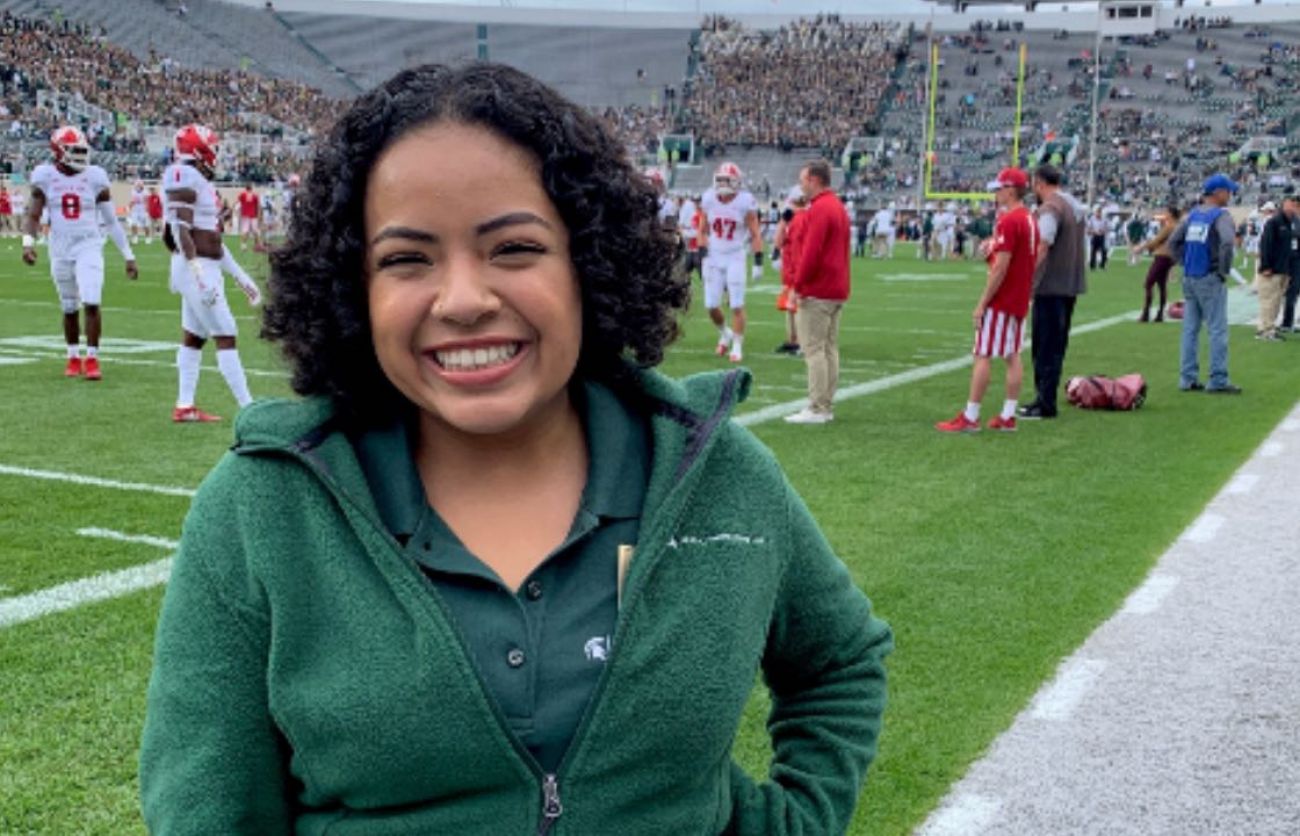Fewer Michigan college students want to be teachers. That’s a problem.


Julia Alvarez knows all the reasons not to be a teacher. The pay is low. The hours are long. And some people don’t have great memories of their time in classrooms.
But the negatives don’t outweigh the positives of teaching for the 21-year-old Michigan State University senior majoring in elementary education. “I want to do something I am passionate about, and wake up every day ready to go to work,” Alvarez said.
Fewer college students are making that choice. Low salaries and negative perceptions of teaching are driving Michigan college students away from teacher preparation programs, hobbling efforts to improve the state’s struggling schools. Fewer teachers with four-year education degrees has also meant more Michigan classrooms led by long-term substitutes, who generally have far less training.
Enrollment at Michigan’s teacher preparation programs dropped 70 percent in eight years. There were 16,000 fewer college students majoring in K-12 education degree programs in 2016-17 school year (the most recent year statistics are available) than there were 2008-09, according to data from the U.S. Department of Education.
Those 16,000 fewer potential teachers are the equivalent of one-sixth of Michigan’s current public school teaching workforce.
The number who graduated from the state’s college-based teacher prep programs – the primary pipeline for new classroom instructors – dropped 45 percent between 2011 and 2017, from 4,863 to 2,659.
While federal data are not available for the current school year, enrollment in teacher preparation programs at Michigan State University, Central Michigan University and the University of Michigan, three of the state’s largest educators of future teachers, have continued to decline or have remained flat since 2016-17.
Current enrollment levels won’t address teacher shortages that now exist in some areas of the state, said Elizabeth Birr Moje, dean of the School of Education at the University of Michigan, where undergrad enrollment has dropped by a third in the past decade.
“We're not filling the slots,” Moje said. “We need to be producing more teachers who are well prepared [and] who have been taught how to teach.”
In the 2018-19 school year, more than 2,500 Michigan classrooms were led by long-term substitutes, who generally are not certified teachers and can have as little as 60 college credits in any subject area and no education background. Traditional certified teachers are graduates of a teacher education program at a four-year university and complete at least one semester as a student teacher.
As Bridge Magazine first reported, the use of long-term substitutes has ballooned tenfold in five years, as the state’s public schools, particularly urban and rural traditional school districts and charter schools, faced a growing shortage of certified teachers.
Those shortages will likely expand to the rest of the state if the pipeline of new teachers continues to shrink, Moje said.
“We’re headed toward a wave of [teacher] retirements,” Moje said. “We have a lot of people in their late 50s and early 60s, and when the Baby Boomer generation retires, we’re going to see teacher shortages in more places.”
Annual admissions to CMU’s teacher prep degree program dropped by two-thirds between 2012 and 2016, (from 567 to 194), though enrollment has bounced back somewhat and was 385 last school year.
Elizabeth Kirby, dean of Central Michigan’s College of Education and Human Services, said teacher prep programs were hit by a “perfect storm” of stagnating pay, coarsening views of the profession, and a new teacher certification test that many teacher candidates couldn’t pass.
In 2013, Michigan replaced a basic skills test that was deemed too easy, with a widely panned test that two-thirds of aspiring teachers failed. That test was replaced, but not before thousands of college students transferred out of education, Kirby said.
“It wasn’t that we didn’t have students who wanted to be teachers,” Kirby said. “They did, but they couldn’t pass the exam.”
Meanwhile, teacher pay declined in the state.
Average teacher pay in Michigan was lower in 2017-18 ($61,908) than in 2009-10 ($63,024), even without taking inflation into account. The recession caused mass teacher layoffs and classroom sizes to increase, Kirby said, making what had been a safe career into a risky job that, nationally, pays 20 percent less than the earnings of professionals with comparable education backgrounds.
Despite the decline in pay, Michigan teachers still earn $2,200 a year above the national average, in a state with the seventh-lowest cost of living.
Teacher accountability measures, such as basing their evaluations at least in part on student test scores, made the job more stressful and added paperwork, teacher advocates say.
Adding to those factors, “the public perception of teachers is very disrespectful,” Kirby said. “Teaching is often a family profession, and I think teachers began discouraging their children from becoming teachers.”
In a recent survey, just 20 percent of Michigan teachers said they would recommend the profession to family and friends.
Craig Thiel, research director for Citizens Research Council and author of a recent report on Michigan’s leaky teacher pipeline, theorized that teacher prep programs have been the victim of a strong economy that allowed students who might in the past have considered a career in teaching to get jobs in other, better-paying professions.
To reverse the declining enrollment, “we have to commit to paying teachers more,” said Moje of U-M. “I don't know that it even has to be massive increase, but if we want professional performance, we have to be willing to pay people as professionals.”
Teachers in some states have gone on strike for better pay and improved overall school funding, and succeeded in states such as Colorado and West Virginia. Those states, though, had average teacher salaries in the bottom half of the nation; Michigan teacher pay ranks 13th.
Once in the classroom, teachers need more support, such as literacy coaches, teaching assistants and mentor teachers, Moje said.
“Teaching is actually harder than it ever was before,” Moje said. “They deal with things like trauma, things like stress and anxiety, things like multiple languages spoken in the classroom. All of those things make the job more demanding.”
CMU’s Kirby suggested that one way to make the job more financially attractive is to launch a state-level student loan debt forgiveness program for teachers who work five years in urban or rural schools, and offer state scholarships targeted at students enrolled in teacher prep programs.
MSU student Alvarez said she knows the challenges that lie ahead of her when she leaves campus and walks into a classroom. It won’t be easy. But it will be important.
“I just know our world can look so different,” Alvarez said, “and I think it starts in those spaces.”
Mike Wilkinson contributed
See what new members are saying about why they donated to Bridge Michigan:
- “In order for this information to be accurate and unbiased it must be underwritten by its readers, not by special interests.” - Larry S.
- “Not many other media sources report on the topics Bridge does.” - Susan B.
- “Your journalism is outstanding and rare these days.” - Mark S.
If you want to ensure the future of nonpartisan, nonprofit Michigan journalism, please become a member today. You, too, will be asked why you donated and maybe we'll feature your quote next time!


